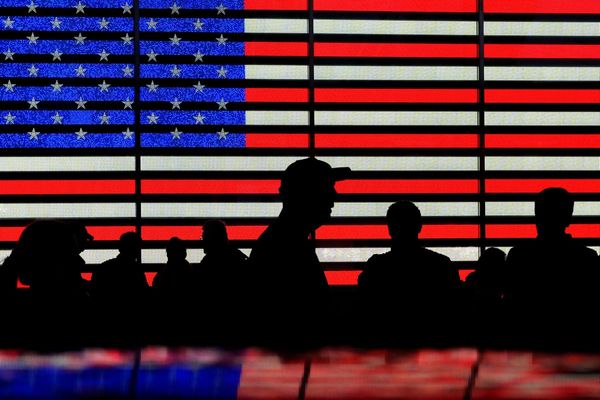Axios' "How it Happened: The Next Astronauts" podcast follows the first all-civilian space crew as they prepare for their historic mission.
The all-civilian Inspiration4 crew's training program to prepare them for their trip to orbit is a reality check on the space industry's goal to send many more ordinary people to space.
Why it matters: One day SpaceX, which is operating the upcoming mission, hopes to help establish a settlement on Mars and other companies like Blue Origin are working to build futures where millions of people live and work in space. In order to do that, more people need to fly to space — with far less preparation and more ease.
- That starts with Inspiration4. The mission is a proof of concept for SpaceX as it begins to fly people who aren't professional astronauts.
How it works: The Inspiration4 crew — Jared Isaacman, Sian Proctor, Chris Sembroski and Hayley Arceneaux — have been training together for less than six months, since the full crew was announced at the end of March.
- The crew has spent hours in simulators learning how to operate the Dragon capsule and used time away from SpaceX headquarters to study on their own, taking quizzes and ingesting binders of protocols and systems breakdowns.
- Isaacman, the commander of the mission, planned extracurricular training activities for the crew, like a climb up Mount Rainier in Washington state and flying in fighter jets in Bozeman, Montana.
The details: The crew's training at SpaceX was also punctuated by a 30-hour test run inside a full-sized Dragon simulator at the company's headquarters.
- They ate what they'll eat in space and even had to sit through a simulated launch delay caused by weather as rotating crews of mission controllers kept an eye on them from the "ground."
- Throughout the simulated mission, SpaceX kept them and their flight controllers on their toes with problems they would need to solve to get the capsule running normally.
As the capsule came back from its simulated trip to space, everything started to go wrong in a cascading series of failures that almost made the trip end in failure.
- "The last 45 minutes, there was awareness from us in the capsule and them on the ground... There is like a chance that this might not be actually a survivable situation," Isaacman told me.
- And yet, the crew and their mission managers got everyone back to Earth safely.
What's next: All of this training will culminate a three-day mission tailored to this crew's needs and desires.
- They're planning to eat cold pizza and other fresh foods their first day in orbit.
- The crew is also picking out movies they'll be able to watch while up in space.
- And SpaceX has even installed a huge bubble window — called a cupola — at the top of their Dragon capsule to give the crew incredible 360-degree views of space and Earth.
Yes, but: This training has taken over their lives.
- Multiple crewmembers have had to put their day jobs on pause in order to focus full-time on training to go to space.
- Most people can't take on this kind of obligation, and by the time this crew finishes training, they'll have far more in common with professional astronauts than an average civilian off the street.
- SpaceX did pare down its training for this crew, but much of what they learned is still in line with what professional astronaut training entails, like learning the ins and outs of Dragon's engineering and how to take over if something fails.
The bottom line: If the plan is — as SpaceX has said — to get spaceflight to the point where it's like airline operations are today, the company is going to need to find a way to streamline training, making it quicker and easier for civilians to fly.
Go deeper: Listen to the new season of Axios' How it Happened: The Next Astronauts here.







